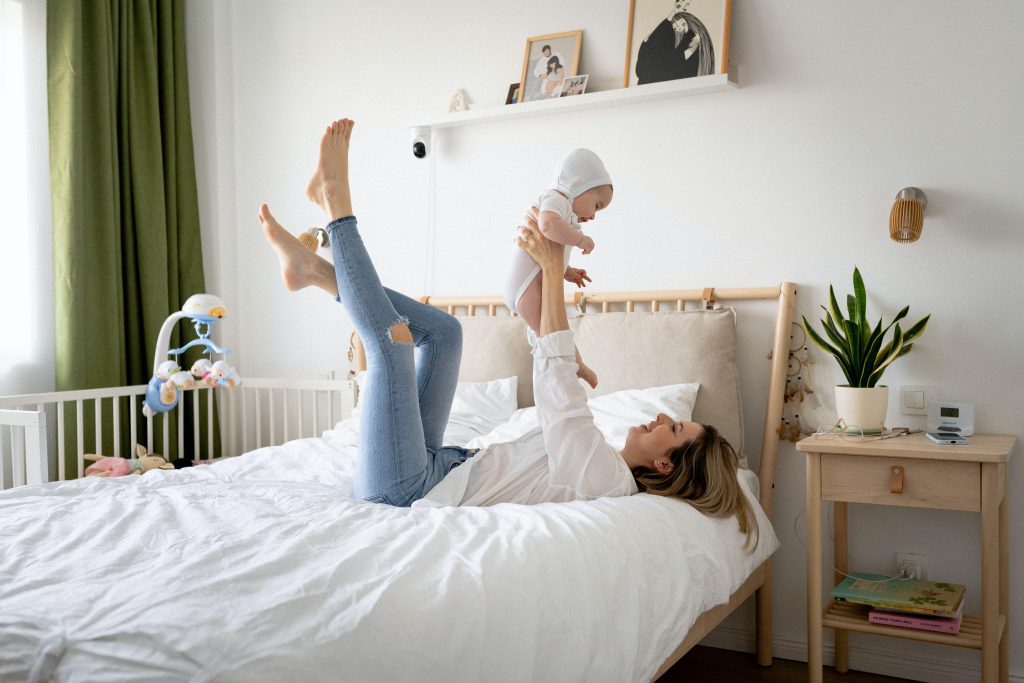Discover how pregnancy-related hormones can affect the spine and ligaments, leading to changes in posture, discomfort, and potential long-term effects.
How Pregnancy-Related Hormones Impact the Spine and Ligaments

Pregnancy is a truly remarkable journey that brings with it a plethora of changes to a woman’s body. While we celebrate the joy of creating life, it’s important to also recognize the impact these changes have on our spines and ligaments. Yes, those sneaky pregnancy-related hormones are at it again, wreaking havoc and turning our bodies into a symphony of miraculous transformations. So grab your seat belts, ladies, and let’s dive deep into the fascinating world of how pregnancy-related hormones impact our spines and ligaments!
Understanding Pregnancy-Related Hormones
Before we get into the nitty-gritty, let’s first understand the cast of characters responsible for all the drama: pregnancy-related hormones. These powerful chemicals are like tiny superheroes with the ability to influence almost every aspect of our bodies. From the moment that tiny seed is planted in our womb, our hormones kick into high gear and unleash their magical powers.
One hormone that deserves a front-row seat in our discussion is relaxin. No, it’s not a fancy cocktail at the beach; it’s a hormone that plays a crucial role in pregnancy. Relaxin is responsible for loosening our ligaments and preparing our bodies for the incredible journey of childbirth. Think of it as our body’s way of saying, “Hey, ligaments, let’s be flexible and accommodating for this little miracle!”
But what exactly does relaxin do? Well, let’s dive deeper into its role in pregnancy.
The Role of Relaxin in Pregnancy
Relaxin, our superhero hormone, is produced by the ovaries and later by the placenta during pregnancy. Its primary job is to relax and loosen our ligaments, particularly those in our pelvis. Picture it as a gentle massage, making way for the growing baby and smoothing the path for childbirth. It’s like a secret handshake between our hormones and our ligaments, with the ultimate goal of expanding our pelvic area. Thanks, relaxin!
But relaxin doesn’t stop there. It also plays a role in preparing our breasts for breastfeeding. This hormone helps to increase blood flow to the mammary glands, stimulating their growth and preparing them to produce milk. So, while relaxin may be most famous for its ligament-loosening abilities, it also has a hand in getting our breasts ready to nourish our little ones.
Now that we’ve explored the wonders of relaxin, let’s not forget about our other hormone buddies, progesterone and estrogen.
Progesterone and Estrogen: Beyond Reproduction
While relaxin steals most of the spotlight, let’s not forget about our other hormone buddies, progesterone and estrogen. These two hormones, often overshadowed by their more famous sibling, play crucial roles throughout pregnancy.
Progesterone, the hormone responsible for maintaining pregnancy, helps relax smooth muscles in our body, including those in our intestines and blood vessels. This relaxation allows for better nutrient absorption and blood flow, ensuring that our growing baby receives all the necessary nourishment. Additionally, progesterone helps to prevent the uterus from contracting prematurely, providing a stable environment for the baby to thrive.
And estrogen? Well, estrogen is all about encouraging growth and development—perfect for nurturing that little bundle of joy inside us! This hormone promotes the growth of the uterus and stimulates the development of the baby’s organs and tissues. It also plays a role in the formation of the placenta, the lifeline that connects us to our baby and provides vital nutrients and oxygen.
But progesterone and estrogen don’t limit their effects to reproduction alone. These hormones also have a significant impact on our mood and emotions during pregnancy. They can contribute to the infamous mood swings and heightened emotions that many pregnant individuals experience. So, the next time you find yourself shedding tears over a heartwarming commercial, you can thank progesterone and estrogen for their part in the emotional rollercoaster.
In conclusion, pregnancy-related hormones are a fascinating and intricate web of chemical messengers that orchestrate the miraculous journey of pregnancy. From relaxin’s ligament-loosening powers to progesterone and estrogen’s role in nurturing and supporting the growing baby, these hormones work together to create the perfect environment for new life to flourish. So, let’s celebrate the superheroes within us and marvel at the wonders of pregnancy-related hormones!
The Impact of Hormones on the Spine
Now that we understand the hormones at play, let’s dive into how they can impact our spines. Our spines, those magnificent structures that hold us upright and keep us moving, are not immune to the hormone revolution happening inside us. From subtle shifts to more noticeable changes, our spines experience it all!
But what exactly are hormones? Hormones are chemical messengers produced by various glands in our bodies. They travel through our bloodstream, regulating and coordinating different bodily functions. When it comes to our spines, hormones can have a profound effect on their health and well-being.
Hormonal Changes and Spinal Health
During pregnancy, the increased levels of relaxin can cause our spinal ligaments to become more lax and flexible. While this may sound like a great party trick, it also means that our spines are more vulnerable to injury or strain. So, ladies, be kind to your spines and listen to what they’re telling you. If something doesn’t feel right, take a breather and give yourself the TLC you deserve!
Relaxin, as the name suggests, relaxes the ligaments in our bodies, including those in our spines. This relaxation is necessary to accommodate the growing baby and prepare the body for childbirth. However, it also means that the stability of our spinal joints is compromised, making us more susceptible to discomfort and pain.
But relaxin is not the only hormone that can impact our spinal health. Estrogen, another hormone that fluctuates during pregnancy, can also play a role. Estrogen helps maintain the strength and density of our bones, including those in our spines. When estrogen levels decrease, as they do after menopause, the risk of developing osteoporosis and related spinal conditions increases.
Pregnancy Hormones and Back Pain
Ah, back pain during pregnancy. It’s like a rite of passage for all expectant mothers. But fear not! Understanding the hormonal influence on back pain can help us tackle this pesky issue head-on. As relaxin works its magic on our ligaments, it can cause instability in our spinal joints, leading to discomfort and, you guessed it, back pain. So it’s not just those extra pounds or the baby doing somersaults in there—it’s those hormones playing their mischievous role!
But why does back pain persist even after pregnancy? Well, the effects of relaxin may linger for some time, even after childbirth. It takes a while for the ligaments to regain their pre-pregnancy strength and stability. Additionally, the physical demands of caring for a newborn, such as lifting and carrying, can put strain on the spine, exacerbating any existing discomfort.
It’s important to note that while hormones can contribute to back pain during pregnancy, they are not the sole culprits. Factors like poor posture, weight gain, and muscle imbalances also play a role. Therefore, it’s crucial to address these factors holistically and seek professional guidance if needed.
In conclusion, hormones have a significant impact on the health and well-being of our spines. From pregnancy-related changes to the effects of aging, understanding how hormones influence our spinal health can help us take proactive steps to maintain a strong and pain-free back. So, let’s give our spines the love and attention they deserve!
Hormonal Effects on Ligaments
Our ligaments, those elastic bands that hold our joints together and provide stability, undergo some serious makeovers during pregnancy. Remember our hormone fairy, relaxin? Well, it’s not just the spine it affects—ligaments throughout our body experience its influence too! Brace yourself for some serious ligament talk.
Softening of Ligaments During Pregnancy
One of the main effects of relaxin is ligament softening. It’s like giving our ligaments a temporary gym membership, allowing them to stretch and become more flexible. This softening, while crucial for childbirth, can also make us more prone to joint injuries. So, ladies, be mindful of those graceful yoga poses and listen to your body’s new limits. Save the acrobatics for after the baby comes!
The Role of Hormones in Joint Laxity
Joint laxity, a term that sounds like a stylish dance move, refers to the looseness and increased mobility of our joints. Thanks to relaxin and its partners in crime, our joints become more supple, allowing for the mechanics of childbirth. But this newfound laxity can also make us more vulnerable to sprains and strains. So, consider yourself the queen of caution and take it easy on those extreme sports, for now, my adventurous mama!
Managing Spinal and Ligament Changes During Pregnancy
Now that we know the ins and outs of hormonal changes during pregnancy, let’s explore some strategies for managing these wild transformations.
Safe Exercises for Spinal Health
Exercise is essential for maintaining spinal health during pregnancy. However, not all exercises are created equal when you’re growing another human inside you. Opt for low-impact activities like swimming, walking, and prenatal yoga. These exercises can help keep your spine happy and your ligaments in check. Plus, they give you a perfect excuse to rock those cute workout outfits!
Precautions to Protect Ligaments
Protecting our ligaments becomes more crucial than ever during pregnancy. Avoid sudden movements or activities that put excessive strain on your joints. Be mindful of proper body mechanics, like lifting with your legs instead of your back. And always remember to wear those comfy, supportive shoes—they are your allies in the battle against joint stress!
Post-Pregnancy: Returning to Normal
After the joyous arrival of your little one, your body goes through yet another hormonal rollercoaster. But fear not, superhero mama, your body knows how to bounce back and regain its pre-pregnancy glory!

Hormonal Shifts After Childbirth
After childbirth, the levels of relaxin and other pregnancy-related hormones gradually decrease, allowing our ligaments to regain their pre-pregnancy stability. It’s like saying goodbye to that free-spirited roommate and welcoming back your responsible, organized self. Hormones, you served us well, but it’s time to restore some order!
Restoring Spinal and Ligament Health Post-Pregnancy
Postpartum exercise is not only beneficial for your mental and physical well-being, but it can also help restore your spinal and ligament health. As you venture into the realm of mommy workouts, consult with your healthcare provider and find activities that support your recovery. Remember, your body is a warrior, and with a little patience and self-care, you’ll be back to your superhero self in no time!
So there you have it, ladies—the incredible impact of pregnancy-related hormones on our spines and ligaments. From the hormone party happening inside your body to the tips for managing the changes, we hope this dive into the magical world of hormones has provided you with valuable insights and a few smiles along the way. Pregnancy is a beautiful, transformative journey, and now, armed with knowledge, you can embrace it with even more grace and confidence!



